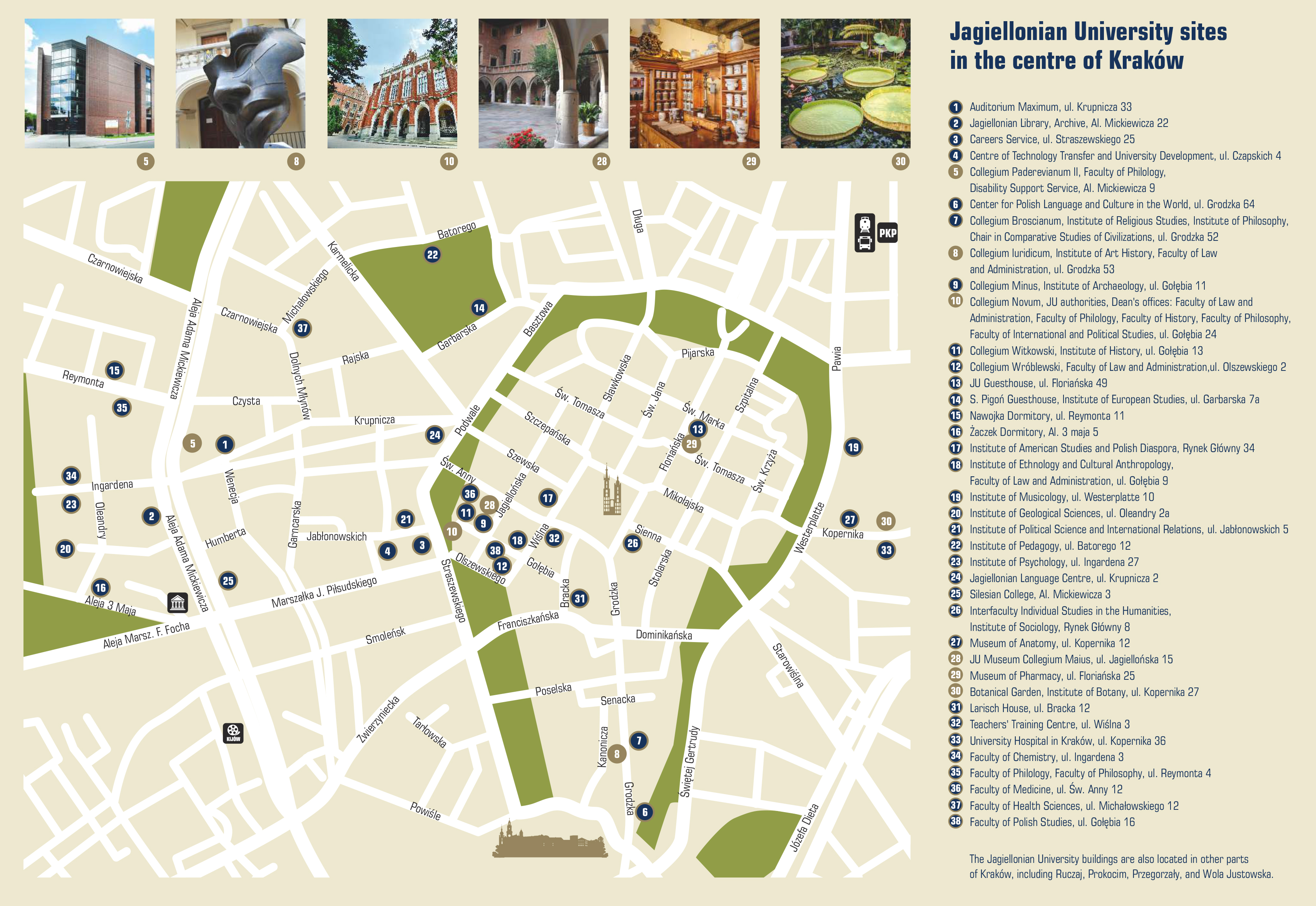 Web Content Display
Web Content Display
 Web Content Display
Web Content Display
 Web Content Display
Web Content Display
About the Jagiellonian University

The Jagiellonian University was founded on 12 May 1364 by King Casimir the Great. It is the oldest university in Poland and one of the oldest in Europe. Studium Generale – as the university used to be called at that time – consisted of three faculties: of law, medicine, and liberal arts. In 1400, the university was re-established by King Vladislaus Jagiełło, and another faculty – of theology – was added to the restored institution.
The 15th and 16th centuries were considered the "golden age" of the university in Kraków, which was famous for excellence in mathematics, astronomy and law, and a number of eminent scholars. The university attracted foreigners from all over Europe, who accounted for 44 percent of the students. Its most distinguished graduates in that period included the world famous astronomer Nicolaus Copernicus.
Since the late 16th century, the university was generally known as the Kraków Academy, whereas during the reform implemented by Hugo Kołłątaj in the years 1777–1786, it changed its name to the Principal School of the Realm. After the third partition of Poland (1795), when Kraków was incorporated into Austria, the university changed its name yet again – to the Principal School of Kraków, whereas the current name – the Jagiellonian University – has been officially used since 1817.
Today, the Jagiellonian University consists of 15 faculties, including 3 medical faculties, which make up the Medical College. The university provides education to about 50 thousand students, 65% of whom are women. Besides international students from the European Union, there are more and more young people from Asia, the Americas, and Africa, as well as Eastern European countries studying at the oldest Polish higher education institution.
The offices of Rector and Deans are located in Collegium Novum, which was built in 1887 at the old university campus next to the Planty park, along with other university buildings, such as Collegium Witkowski and Collegium Minus. The most valuable building of the historical academic quarter is Collegium Maius, the oldest university professors' college (established in 1400), which housed the Jagiellonian Library in the 19th and early 20th century, and now houses the JU Museum, whose collections include unique works of art, pieces of old scientific apparatuses, and other historical items. Next to the museum, there is the Professors' Garden, full of interactive instruments. In 2014, a time capsule was buried there to celebrate the 650th anniversary of the university's foundation.

JU Collegium Novum
Since 1940, the Jagiellonian Library, one of the largest libraries in Poland, is located on ul. Mickiewicza. It is part of the 2nd university campus, which somprises such places as the Collegium Paderevianum complex and Auditorium Maximum, a teaching and conference facility.
The most modern part of the Jagiellonian University - the Campus of the 600th Anniversary of the Jagiellonian University Revival – is located in the Ruczaj district. It is the home of several faculties: Faculty of Biology and Earth Sciences; Faculty of Biochemistry, Biophysics and Biotechnology; Faculty of Physics, Astronomy and Applied Computer Science; Faculty of Mathematics and Computer Science; and Faculty of Management and Social Communication, as well as the Natural Sciences Education Centre and the Małopolska Centre of Biotechnology.
Click the image below for a larger version:
Jagiellonian University also means:
- Jagiellonian Library – over 5 million books and periodicals
- Astronomical Observatory – monthly "Evenings with the stars"
- Botanical Garden – the oldest one in Poland, founded in 1783
- University Centre of Veterinary Medicine – a joint institution of the Jagiellonian University and the University of Agriculture in Kraków, the only veterinary medicine study programme in Southern Poland
- Synchrotron Radiation Centre "Solaris" – the largest interdisciplinary research device in this part of Europe
- Małopolska Centre of Biotechnology, which conducts world class research
- Vineyard "On Manor Brook", which produces international prize-winning university wine
- 10 museums (e.g. the unique Museum of Pharmacy)
- A multitude of musical ensembles
- Auditorium Maximum – teaching and conference facility with an assembly hall for more than 1, 200 people
- The biggest employer in the Małopolska region
- The longest academic history in Poland and one of the oldest in the world
Take a virtual tour of the Jagiellonian University!
Visit us!
Click the image below for a larger version.






